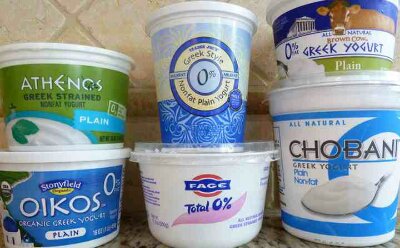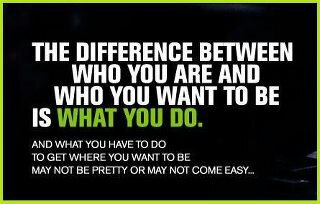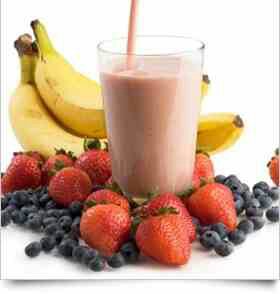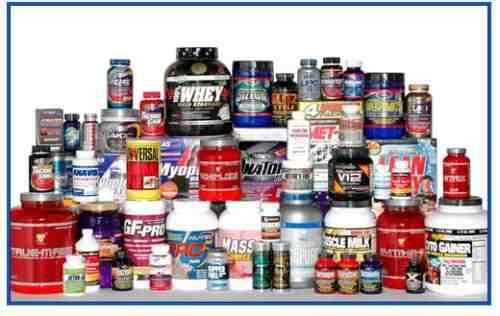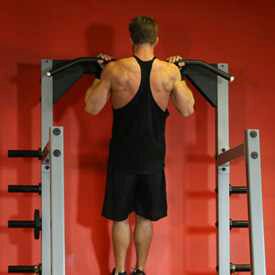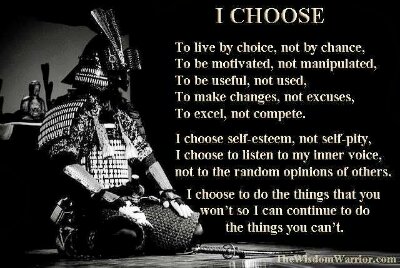Water is great for you; but you may crave some flavor with your liquid. Juice, soda, sports drinks, even coffee are flavored water. Unfortunately, the flavor comes at a price. How do you add some taste to your water without adding too much sugar and extra calories? Add fruit. Try the suggestions here or comment with your own healthy water concoctions.
Category Health
Benefits Of Cauliflower
Cauliflower is a nutrient rich vegetable that is excellent for supporting a strong immune system and optimum health. Cauliflower is incredibly high in vitamin C, K, and B-complex and minerals such as boron, calcium, molybdenum, and tryptophan. It is also a good source of high quality protein that is easily assimilated into the body. Cauliflower contains powerful anti-cancer compounds such as indole-3-carbinol and sulforaphane which are particularly beneficial for helping to prevent breast, cervical, ovarian, colon, stomach, and prostate cancers. Cauliflower also contains a compound called Di-indolyl-methan (DIM) which has been shown to be effective in the treatment of the Human Papilloma Virus (HPV) and cervical dysplasia. Cauliflower also has excellent anti-inflammatory properties due to its omega-3 and vitamin K content and is an essential food for those trying to prevent chronic inflammation as in fibromyalgia, hepatitis, arthritis, cardiomyopathy, cystic fibrosis, IBS, and Alzheimer’s disease. Cauliflower has also been found to help protect the lining of the stomach which is vital for preventing bacterial overgrowth of H. Pylori in the stomach. Cauliflower is also known to be an effective detoxifier for the liver and spleen and can aid in cleansing toxins from the blood, lymph, tissues, and organs. Raw cauliflower is an excellent alternative to white rice and can be made by placing cauliflower into a food processor and grinding until it reaches a rice-like texture. This can then be used in nori rolls or as a base to a grain-free tabouli salad with fresh chopped tomato, scallions, cilantro or parsley, and a drizzle of olive oil or avocado. Cauliflower is also wonderful steamed, sauteed, or roasted. Spices such as turmeric, ginger, red pepper flakes, and paprika mix exceedingly well with cauliflower and provide a nutritional and medicinal boost. Cauliflower can be readily found at your local grocery and health food stores.
Protect Yourself In The Gym
Have you ever heard of the word fomite? No? A fomite is an inanimate object that can become contaminated by an infected person then serve as a source infection for others. The best fomites are non-porous, solid objects like door handles, elevator buttons and counters just to name a few. Once infected these surfaces are capable of transmitting bacterial, viral and fungal infections without discrimination.
So why should you care about fomites? Great question. And, I have an even better answer. Gyms are a perfect breeding ground for infections and dumbbells, benches and locker room floors are excellent fomites. Think about it. How many times have you seen someone leave the restroom without washing their hands as they head out into the weight area? What about the gal that keeps coughing and sneezing without covering her mouth? And, let’s not forget about the guy that drips sweat all over the weight bench. All of these people are potential shedders and spreaders of infection.
According to a position paper released by the National Athletic Trainers’ Association, the nature of athletics exposes the skin to a wide variety of stresses. Vigorous exercise, environmental factors and infectious agents act together to continually attack the integrity of the skin and challenge the immune system. The successful results of these attacks are infections and colds. In fact, one of the most common type of infections picked up in gyms are skin infections. Other infections include things like ringworm, herpes simplex, influenza, HPV, E. coli, staph and MRSA.
Expected & unexpected sources of infection
The list of expected and unexpected culprits involved in the transmission of infections is fairly extensive. Here is an abbreviated list of the more common culprits that can be found in any standard gym.
Shower stalls, Locker room floors, Locker room benches, Steam rooms Weight benches, Water fountains, Your clothing, Weight gloves, Gym bags, Yoga and stretching mats, Dumbbells and Cardio equipment
Before you give up on going to the gym all together, continue reading for a couple of ways to reduce your risk.
1. Use disinfectant Sprays
So you might be thinking that you’re protected from the germs listed above because you use the disinfectant spray provided by your gym. Well if you are thinking this, then you’d only be partially right.
A study published in the Clinical Journal of Sports Medicine demonstrated that twice-a-day equipment disinfection wasn’t effective in reducing virus exposure. The study found that 63% of the exercise equipment in two gyms was contaminated with viruses, namely rhinovirus. Rhinovirus is the primary cause of the common cold.
Certainly I’m not suggesting that you stop using disinfectant sprays because they do help…a little. Honestly you may even want to purchase your own personal can of disinfectant spray versus using the watered down stuff that your gym provides.
2. Don’t touch your face
Believe it or not you can actually infect yourself with viruses like rhinovirus and influenza. If you touch infected surfaces then rub your eyes or wipe your mouth then you’ve just introduce an infection to your body. The solution is to stop touching your face—problem solved.
3. Create a Barrier
I would suggest that you create a barrier between yourself and the equipment that you use. A simple towel can provide you with an effective barrier, however if you’re feeling fancy you can pick up the pocketed TowelMate with its Germ Shield Technology (www.towelmate.com). In addition to being used with equipment, towels should be used on locker room benches—including those in the steam room.
Shower shoes or flip-flops are also a must as fungal infections like athlete’s foot and plantar warts, caused by HPV, are easily spread in warm, moist locker rooms and shower stalls. If you have any open cuts, sores or skin abraisions then you’ll want to cover them with a bandage or Band-Aid.
4. Shower with antimicrobial soap
Showering with an antimicrobial soap from head-to-toe is recommended to kill any germs you may have come into contact with. The National Athletic Trainers’ Association recommends that you shower prior to leaving the gym. Why? Because you can easily transport germs with you.
5. Wash all athletic gear daily
While non-porous materials are the best fomites, your clothes, weight gloves and weight belt can also become infected if they come into contact with viruses, bacteria or fungi. And, by all means you should also wash your gym bag and lifting straps.
Through careful planning and adherence to the above tips, you can go a long way towards protecting yourself from potentially serious infections.
Fitness And Health
Workouts are very important for the body to shape up, slim down, or strengthen. Regardless of what you do, habitual workouts and physical activities are the trail to a healthy and well fitted body. Daily workout for the body burns fats, calories, build up muscles, lowers cholesterol, relieves stress and unease and also lets us sleep peacefully.
If you’re doing a healthy nutrition plan, workouts can improve your body development. Whether you’re a beginner to fitness or have been working out for so long, it is also important to track your diet to get the best results for your body.
Studies have revealed that high-intensity workouts can help burn fat and calories. In addition, with the accumulation of strength-training workouts, these can help you not only boost your metabolic rate but also change your body’s work of art.
When you work out, you become aware of several things about your body. You respire heavier and faster, your heart beats more rapidly, your muscles in pain and you sweat a lot. These are all usual responses to workouts whether you work out habitually or only once in a while. These are good signs that your workout is great. It is not impossible that if you work out regularly, you will be in a very good shape in no time.
Working out is the marvelous treatment to keep our body in a good and healthy state. It’s important that if you want to live a healthy and satisfying life into old age, working out regularly and good exercise is truly what you need.
Truth About Garcinia Cambogia
If you ask me, there’s really only one way to lose weight and keep it off, and that’s to adopt a healthy lifestyle. That includes eating nutritious meals and exercising daily.
But there are plenty of marketers out there would vehemently disagree – because magic pills make money. Acai berry, green tea extract and capsaicin all had their time in the spotlight.
But, let’s explore a supplement that has exploded on the weight loss scene more recently: Garcinia cambogia.
Garcinia Cambogia small, pumpkin-shaped fruit. You may know it as tamarind. The extract of the fruit is called hydroxycitric acid, and that is what the “magic pills” are made from. But do they work?
Let’s explore the research:
1998 study published in the Journal of the American Medical Association: After a 12-week randomized, double-blind study of overweight men and women, researchers concluded that garcinia cambogia did not produce significant weight or fat loss above the placebo.
2013 review in the journal Complementary Theories in Medicine: Researchers evaluated clinical trials that used plantextracts as potential treatment for obesity, and found that the evidence was not convincing in most cases. One exception was a combination of garcinia cambogia taken with another herb called gymnema sylvestre, which showed a slight increase in weight loss results. It’s a glimmer of hope, but surely, more research needs to be done on the subject.
2005 study in the journal Food and Chemical Toxicology: Researchers tested a high dose of garcinia cambogia extract on obese male rats. The good news? The rats lost weight! The bad news? Extremely high doses seemed to cause testicular atrophy and toxicity. Yikes!
If you do decide to hop on the latest bandwagon, whether it is garcinia cambogia or some other plant-based extract, proceed with caution. If you’re talking any prescription medications, talk to your doctor before adding any herbal supplement. There may be dangerous interactions. And as researchers saw in the 2005 study on rats, there may be consequences to taking large doses.
Until we have more research to draw from, we can’t know what is truly safe.
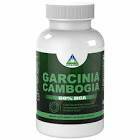
Going Greek
Greek and regular yogurt, in their plain, nonfat or low-fat forms, can be part of a healthful diet. They’re low in calories and packed with calcium and live bacterial cultures. But our Mediterranean friend—which is strained extensively to remove much of the liquid whey, lactose, and sugar, giving it its thick consistency—does have an undeniable edge. In roughly the same amount of calories, it can pack up to double the protein, while cutting sugar content by half…
In the past five years, Greek yogurt sales nationwide have skyrocketed, likely because it satisfies consumers’ needs for health, convenience, and taste, according to Nielsen, a global marketing and advertising research company.
Here’s a closer look at how the two stack up nutrition-wise.
Protein; Greek yogurt is high in protein, which helps promote fullness. A typical 6-ounce serving contains 15 to 20 grams, the same amount in 2 to 3 ounces of lean meat. That makes it particularly appealing to vegetarians, who sometimes struggle to get enough of the nutrient. An identical serving of regular yogurt, on the other hand, provides just 9 grams, meaning you may feel hunger pangs sooner.
Carbohydrates; Going Greek is a smart choice for low-carb dieters. It contains roughly half the carbs as the regular kind—5 to 8 grams per serving compared with 13 to 17. Plus, the straining process removes some of the milk sugar, lactose, making Greek yogurt less likely to upset the lactose-intolerant. Remember, however, that “both types of yogurt can contain high amounts of carbs if they’re sweetened with sugar or another sweetening agent,” says Kari Hartel, a Missouri-based registered dietitian. “No matter which type you choose, opt for yogurt with less added sugar.
Fat; Be wary of Greek yogurt’s fat content. In just 7 ounces, Fage’s full-fat Greek yogurt packs 16 grams of saturated fat—or 80 percent of your total daily allowance if you’re on a 2,000-calorie diet. (That’s more than in three Snickers bars.) Dannon’s regular full-fat yogurt has 5 grams of saturated fat in an 8-ounce serving. Saturated fat raises total and “bad” LDL cholesterol levels, increasing the risk for heart disease. Read nutrition labels carefully. If you’re going Greek, stick to low-fat and fat-free versions.
Sodium; A serving of Greek yogurt averages 50 milligrams of sodium—about half the amount in most brands of the regular kind. (Low-sodium versions of regular yogurt are available.) Too much salt can boost blood pressure and increase the risk of other heart problems. The federal government’s 2010 Dietary Guidelines urge Americans to cap sodium at 2,300 milligrams a day, or 1,500 milligrams if they’re older than 50, African-American, or have hypertension, diabetes, or chronic kidney disease.
Warrior
Training With A Tire


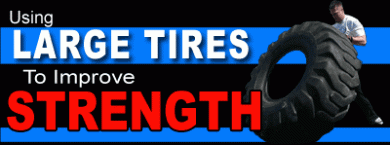 Tire training can add a new dimension to your strength and conditioning program regardless of what sports you play or your level of athletic ability. When people hear me speak about adding tire training into a strength program they often have the mistaken impression that tires are only used by athletes who compete in strongman contest.
Tire training can add a new dimension to your strength and conditioning program regardless of what sports you play or your level of athletic ability. When people hear me speak about adding tire training into a strength program they often have the mistaken impression that tires are only used by athletes who compete in strongman contest.
The strength and aerobic benefits of tire training can enhance your performance in all sports from gymnastics to football. Tire training is one of the best total body strength and conditioning workouts that a person can do. You use your total body when you flip the tire, and by varying the distance you flip the tire and time you flip the tire you can get a great aerobic workout.
Where Do You Get A Large Tire?
The best place to go to find a large tire is at a tire dealership that deals in farm tires or a tire dealership that deals in earth moving equipment tires. Normally these places will be more than happy to give you the used tires. Even in cities there is usually a dealership that works with earth moving equipment. I found my large 800-pound tire discarded as trash in a field about an hour from my home.
All I had to do was borrow a friend’s pickup truck and have my father-in-law help me roll it up a ramp into the truck bed. Finding a tire in the weight you want may take a few phone calls and maybe a little travel, but it will be worth it. If you can get the tire’s make and model number, the tire store or manufacture can give you the weight of the tire new. You can deduct weight based on the ware of the tire and get a pretty good estimate of your tire’s weight.
What Weight Of Tire Should I Get?
If you are involved in strength contest get a starting tire of 650 pounds or more because most of the tires used are in the 700-800 pound range. For those who just want the tire for fitness and a good total body work out you may want to get a tire in the 200-300 pound range.
How Do You Flip The Tire?
When you flip the tire it is best to start with the tire flat on the ground. Place your fingers and hands as far under the tire as you can in this position and keep your hands about shoulder width apart. Squat down and then while pulling the tire up with your arms and back explode out of the bottom position. As the tire comes up you should have enough momentum that you can change your hands from a pulling to a pushing position and push the tire all the way over. Immediately after the tire is pushed over and flat start the process again.
In the beginning you may have to use your knee to pop the tire up high enough so that you can change hand positions to a pushing motion. Try to get away from using your knee as soon as possible to avoid possible leg injury when you have one leg planted on the ground and one in the air. You can flip the tire on any type of surface from concrete to grass to sand.
Sample Programs
I would incorporate tire training into your work out one or two days a week. You can work on strength and speed one work, and you can focus on conditioning and strength the next workout.
Workout #1
Flip the tire over a 70-meter course for time. Have someone time you on each set and keep track of your times. As you progress you should be able to get quicker as you continue to train. 3-4 sets.
Workout #2
Set up a 70-meter course. Flip the tire up and down the course as many times as you can in a 90-second or 2-minute period of time. Keep track of the number of flips you achieve each set. As your endurance increases you should be able to flip the tire more times in the time limit. If the 2 minutes gets to be too easy increase the time that you flip the tire in 30-second increments. 3-4 sets.
Workout #3
Make the tire flip part of a medley of events. Pull the sled for 70 meters and then flip the tire back for 70 meters. Another variation would be to pick up and carry sand bags 70 meters and load the sandbags into the sled. Pull the sled back 70 meters and then flip the tire back 70 meters. Start with 2 sandbags and work up to 3-5.
With these programs feel free to increase or decrease the distance of the events or the weights. The main thing is to get out and train using these alternative methods to help take you to the next level of athletic achievement.
Your friend in strength,
Dave
Stay Fueled
How do you fuel your fitness activities? Do you need a special diet? Not likely. How much you eat really depends on your goals. To properly fuel your body for fitness, there are four main things to be aware of.
Hydrate
When you start breathing heavier, you lose water. If you’re sweating, you’re losing even more. Make sure you drink 8 to 16 ounces of fluid (preferably water) before, during, and after exercise. The longer you go, the more fluid you need. If you’re going longer than 45 to 60 minutes of high intensity endurance exercise, drink a sports drink along the way.
Balance
Get a balance of carbohydrates, protein, and healthy fats at every meal. Don’t just eat all protein or all carbs. All three nutrients are essential for fueling and recovering from activity.
Eat Small, Eat Often
Eat small meals and frequent snacks throughout the day. Your body doesn’t want food all at once, it wants it when the demand is high. Try to meet your body’s demand of energy by supplying it with food when you need it.
Fuel Up Before, Refill After!
Eat before and after exercise (and during if it’s longer than 60 minutes). Ideally, it’s best to eat something close to the time you exercise—a few minutes up to an hour before. Nothing fancy—a banana, yogurt, or handful of nuts is great. Have something to eat within 30 minutes, but no longer than one hour after exercise. Ideally, a combo of carbs, protein, and fluid is best. My favorite? Chocolate mil and whey protein isolate.
Warrior
Pullups/Chinups
Choosing The Right Supplement
When it comes to vitamins and supplements, there are so many choices how do you know if you are getting your monies worth or if you are just getting ripped off!
It Pays to KNOW THE FACTS!
More and more people are turning to nutritional, dietary and herbal supplements to prevent diseases and promote general good health.
Taking steps and improving my health lead me in the direction of nutritional supplementation or more simply put – Vitamins. Growing numbers of people (including me) feel that modern medicine is failing to address the issues that are important. The huge cost of medical care has many of us looking to maintain wellness and improve our health so we can avoid the need to be so dependent on doctors and prescription drugs.
Modern lifestyles expose us to processed unnatural foods as well as toxins in the air we breathe and the water we drink. There are many aspects of modern day life that threaten to damage our health and push us down a path to poor health.
Even health conscious people can struggle to get all the basic nutritional elements they need.
Nutritional supplements can be the answer for many people as they provide the essential elements our bodies need to thrive and achieve the best health possible.
Remember that vitamins and supplements are a great way to complement your diet, but they are just that a good complement. They are not a “magic Pill” that gives us the freedom to eat a diet of junk food while we sit on the couch doing nothing.
The right supplement will definitely improve your health, however eating some fruits and vegetables and getting some exercise gives the body the best chance to achieve maximum wellness.
Choose your supplements wisely
Not all supplements are created equal. Just as there are different levels of quality in the food we eat and the products we buy there are quality levels in supplements.
The nutritional health and wellness industry is growing by leaps and bounds (partly due to the aging baby boomers) and many companies are putting vitamins and supplements on the shelves and online.
It is becoming increasingly difficult to know if you are getting quality that you can trust.
A recent study shows that the likelihood of choosing a non-toxic and effective health supplement from the overwhelming array of products that are available is only 2.5%. In other words, there is a 97.5% chance that without investigating the reliability of the product yourself you could select a nutritional product that might be hazardous to your health!
(I call that a step in the wrong direction).
SO…. The question is “Who can you trust and what is actually good for you?”
It comes down to making choices.
Research your products and the companies that make them before you put your health on the line.
Many of us agonize over what clothes or car or TV we should buy but just grab the cheapest vitamin on the shelf. Its your body and your life. The choices we make now affect our future health and wellness.
So how do you choose the right supplement?
First let me educate you on some information that I wasn’t aware of until just recently.
The FDA (Food and Drug Administration) does not regulate the vitamin and supplement industry.
That means that what is written on the label of a vitamin bottle might be true but also might be just a scam trying to make the supplement look better than it is. There is no one regulating what can or cannot be said about the effectiveness of the supplement.
This also means that there are no laws regulating the serving size or amount of vitamin and/or mineral contained in each tablet or capsule you are ingesting. No one to make sure it is a dosage your body needs or can use to maintain health.
Many vitamins work together in your body and if the proper amounts of each are not ingested together they might as well not be ingested at all.
They could actually do more harm than good.
Another important thing I have learned during my supplement research is that many of the vitamins available use fillers and artificial ingredients in their products. I always thought if you bought Vitamin C then the pill was all Vitamin C. Turns out it might have things like petroleum in there too. It might even have more ‘junk’ then it does the actual vitamin.
The first step:
The first step in choosing a vitamin or supplement is choosing a vitamin or supplement company.
Look at the label of any vitamin you plan on purchasing and see who the company is and check for contact information. Look them up on the Internet or even call them and find out some of their manufacturing practices.
Do they follow and meet with Good Manufacturing Practice (GMP) compliance?
Are the products they make independently tested and analyzed for effectiveness?
Does the manufacturer test the supplements for purity and potency?
What types of ingredients are used? Are they natural or synthetic?
Is the product full of fillers and other artificial ingredients? Many companies use fillers, binders and coatings in their vitamin tablets. These are usually inactive ingredients that are unnecessary for your body and can actually do harm.
Fillers are just that. They fill up space and help form the tablet.
Binders help keep everything together. Many times these can actually be harmful and include such things as gum, carbopol and povidone.
Coatings help keep it all together and can contain artificial flavors to make it taste better. (if you are trying to cover up petroleum and other nasty things no wonder you need artificial flavors.)
Are the products bioavailable? Meaning does it actually get absorbed and used by the body and not just get passed through the system as waste.
Are your vitamins and supplements a food or a drug?
All of this information should be available on the company’s website or by contacting their customer service representatives. If you are unable to find it or if they are unwilling to share this kind of information then it is probably in your best interest to avoid these supplements.
The second step:
The second step is to research and educate yourself on how vitamins and supplements affect your body.
Learn what vitamins work together and why you need a good balance. Taking too much of a vitamin or taking an improper balance of vitamins can actually do more harm than good.
This knowledge can help you when it comes to choosing which supplements to purchase.
Dave





